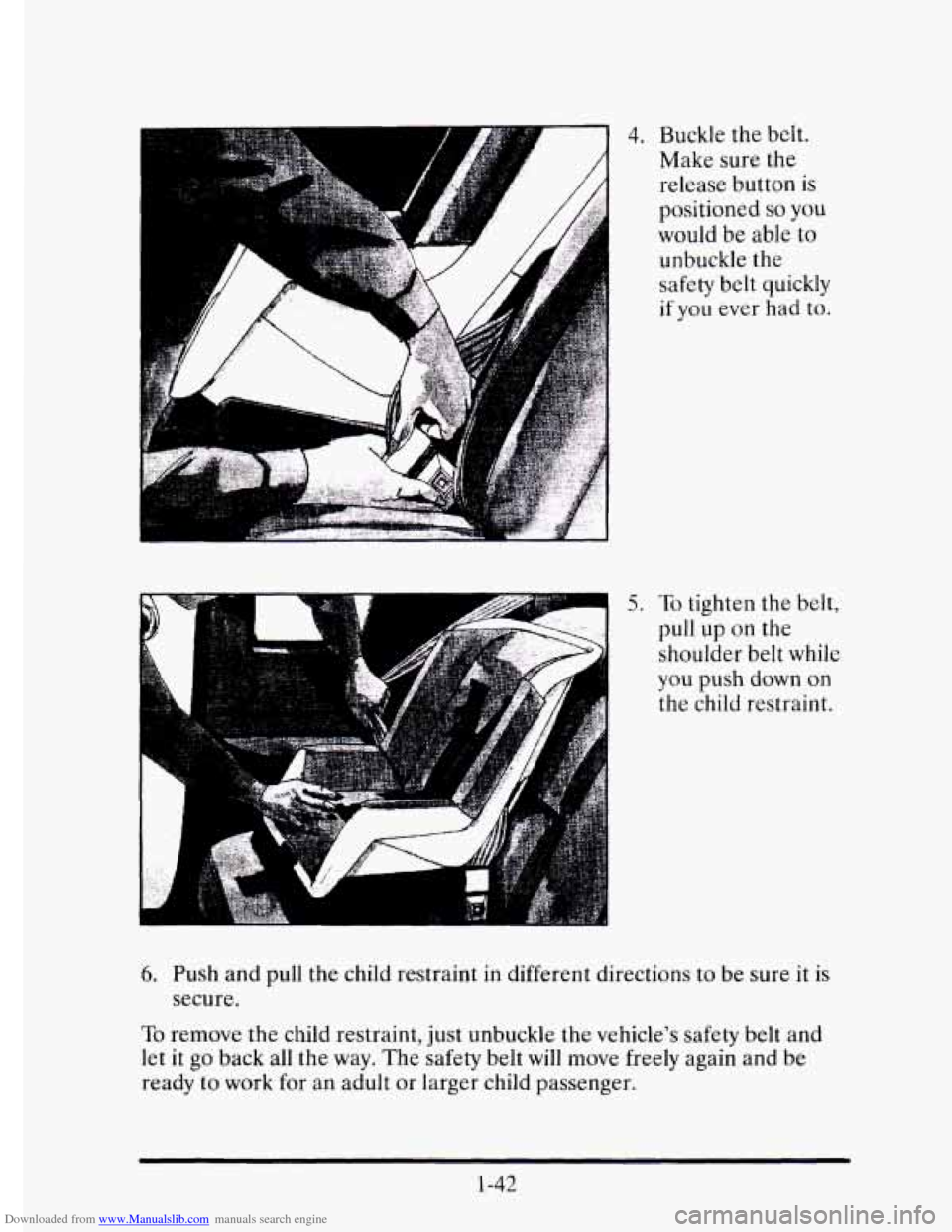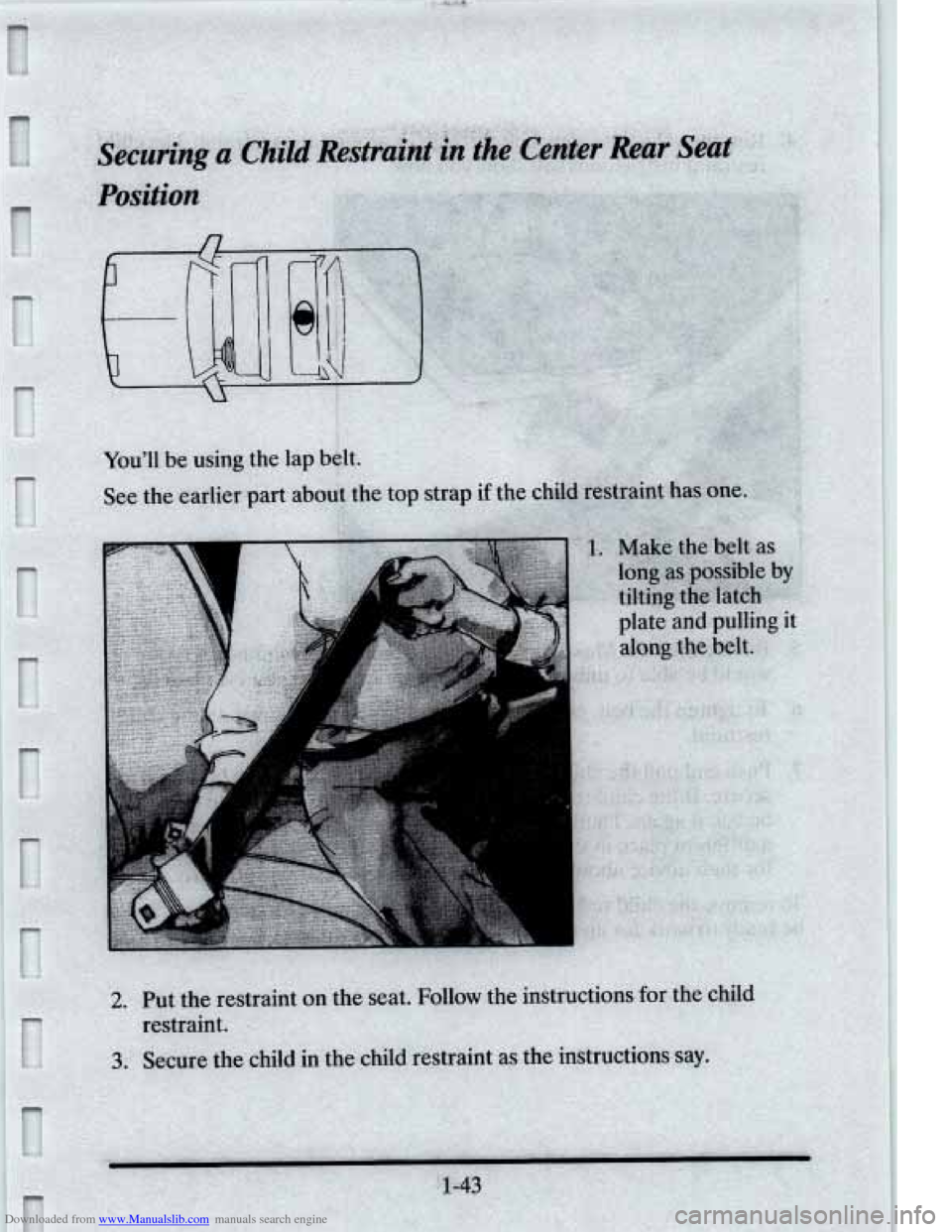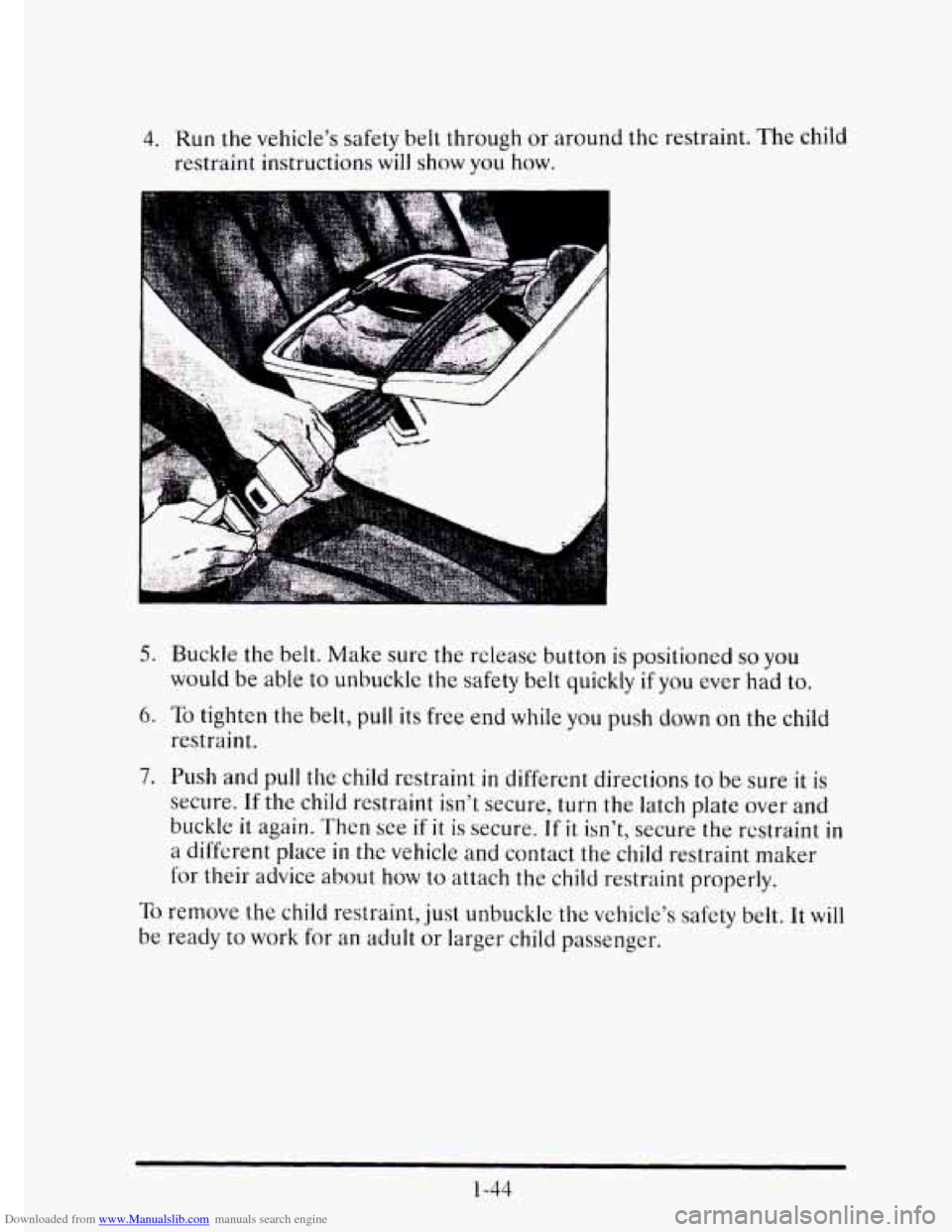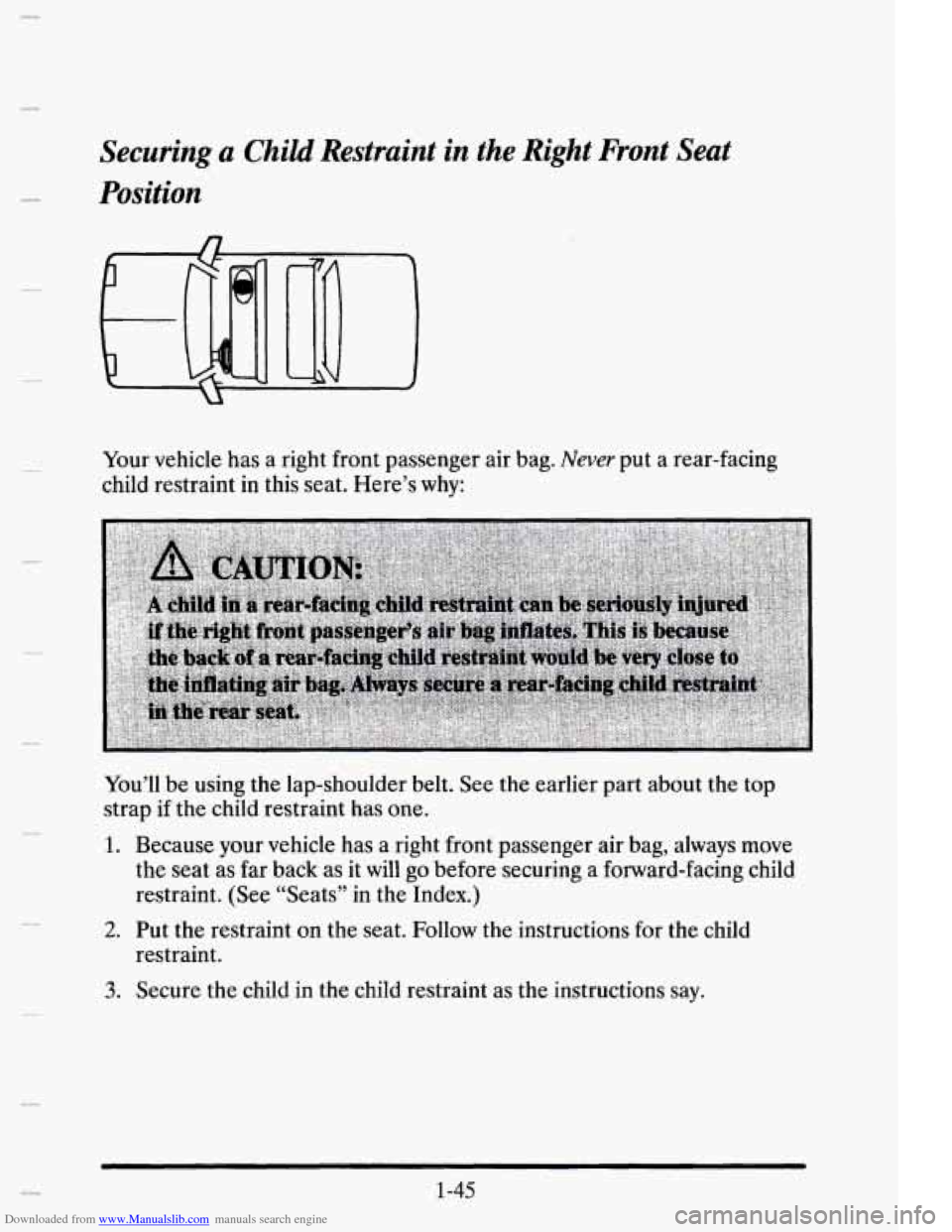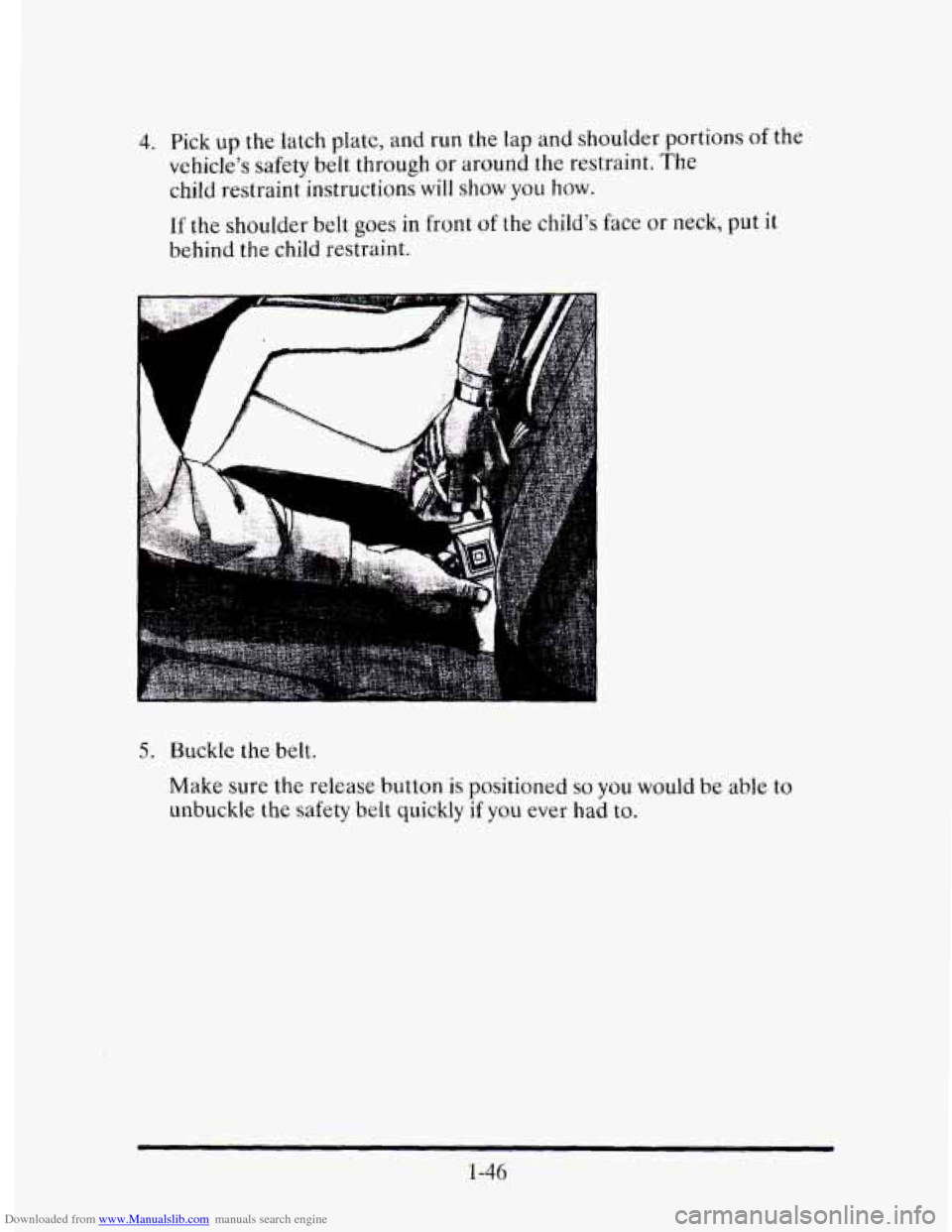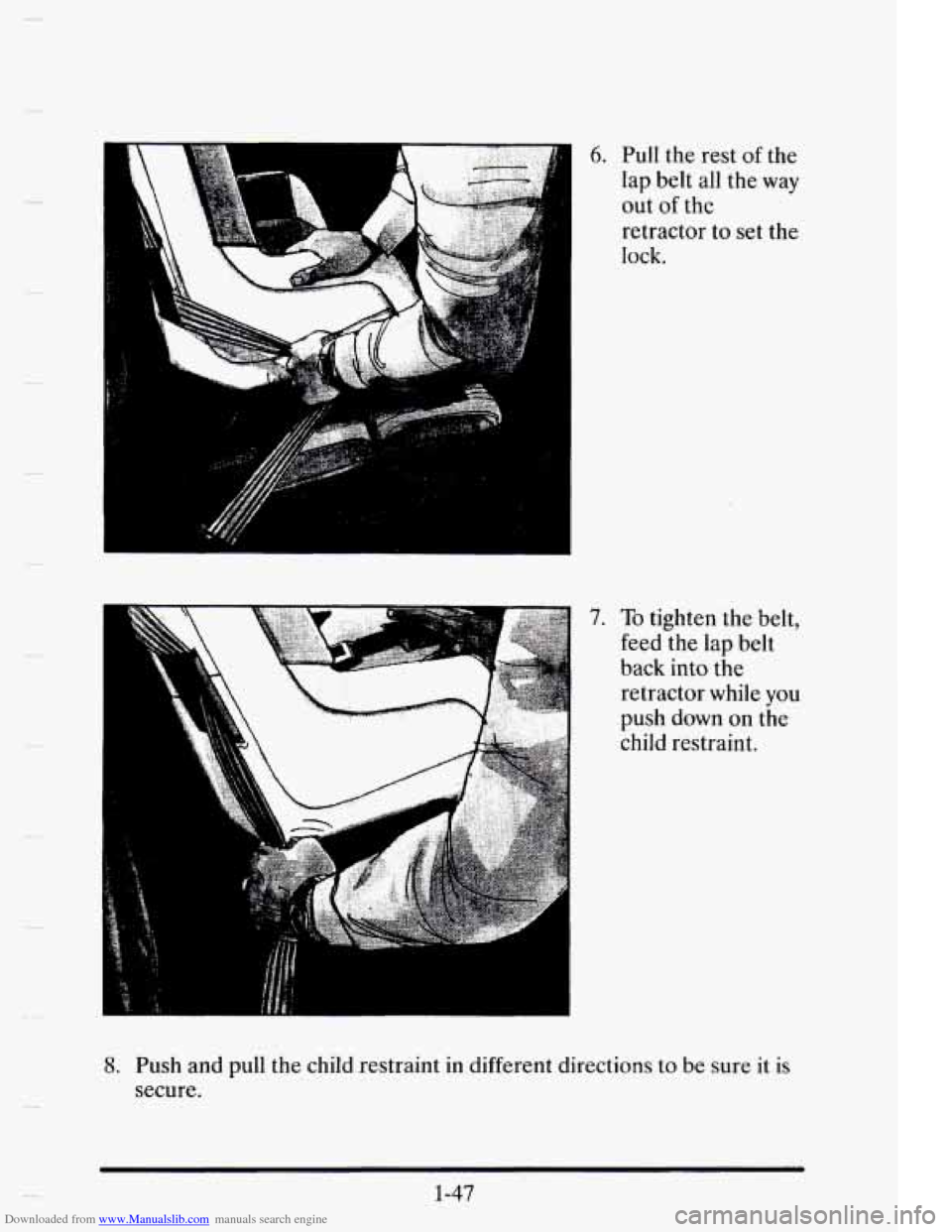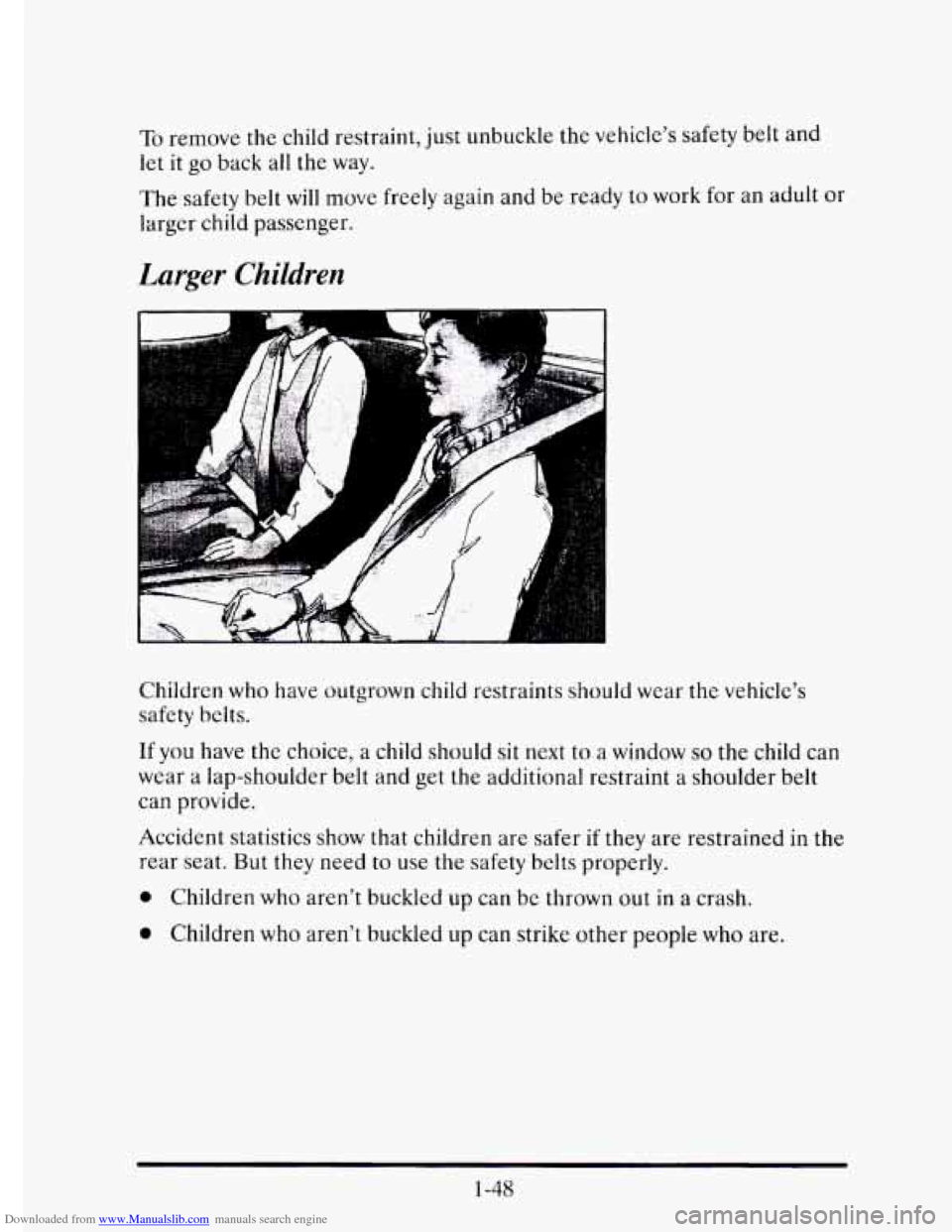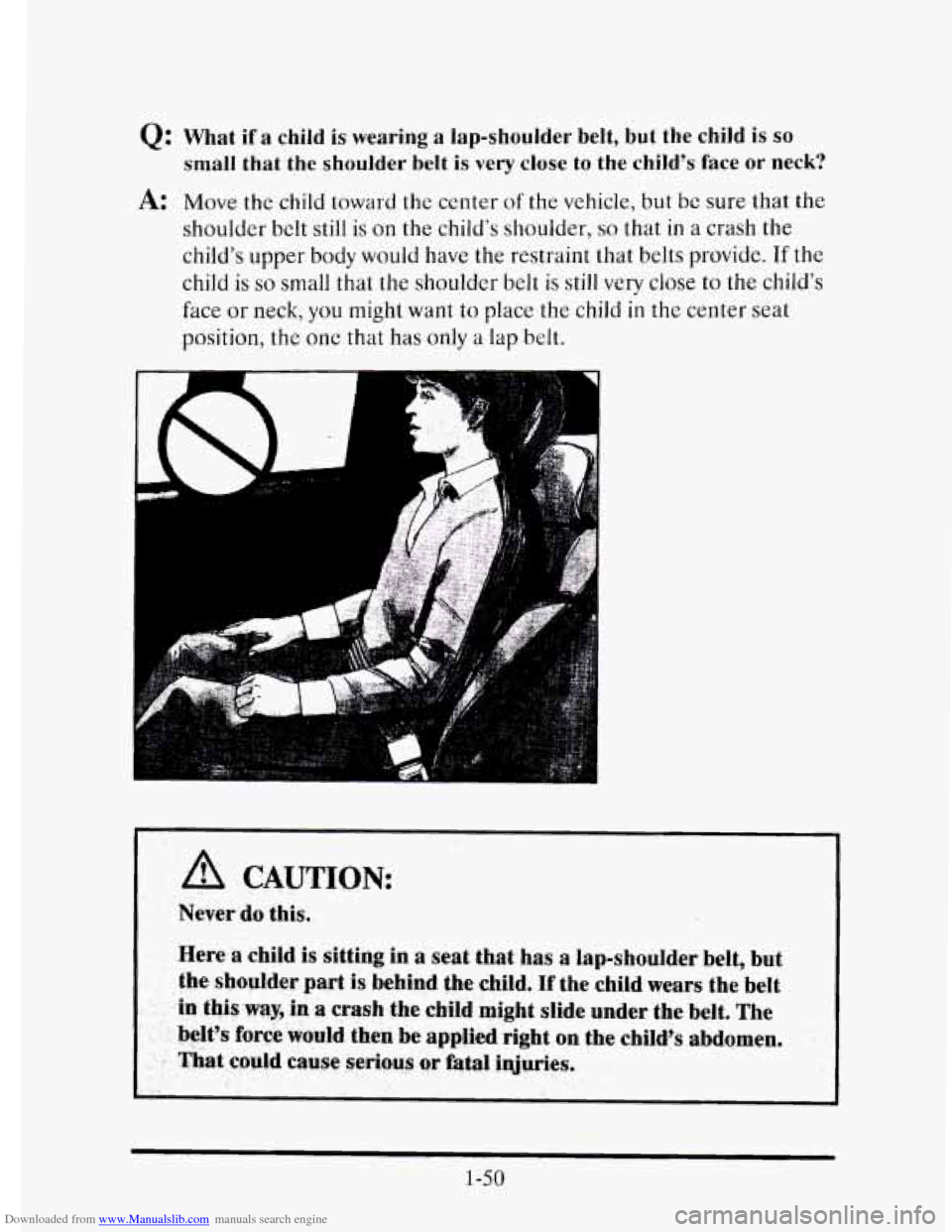CADILLAC ELDORADO 1995 10.G Repair Manual
ELDORADO 1995 10.G
CADILLAC
CADILLAC
https://www.carmanualsonline.info/img/23/7985/w960_7985-0.png
CADILLAC ELDORADO 1995 10.G Repair Manual
Trending: display, headlamp, wiper fluid, ad blue, oil level, trailer, snow chains
Page 61 of 395
Downloaded from www.Manualslib.com manuals search engine 4. Buckle the belt.
Make sure the
release button
is
positioned so you
would be able to
unbuckle the
safety belt quickly
if you ever had to.
5. To tighten the belt,
pull up on the
shoulder belt while
you push down on
the child restraint.
6. Push and pull the child restraint in different directions to be sure it is
To remove the child restraint, just unbuckle the vehicle's safety belt and
let it go back all the way. The safety belt will move freely again and
be
ready to work for an adult or larger child passenger.
secure.
1-42.
Page 62 of 395
Downloaded from www.Manualslib.com manuals search engine
Page 63 of 395
Downloaded from www.Manualslib.com manuals search engine 4. Run the vehicle's safety belt through or around the restraint. The child
restraint instructions
will show you how.
5. Buckle the belt. Make sure the rclease button is positioned so you
would be able to unbuckle the safety belt quickly if you ever had to.
6. To tighten the belt, pull its free end while you push down on the child
restraint.
I. Push and pull the child restraint in different directions to be sure it is
secure. If the child restraint isn't secure, turn the latch plate over and
buckle it again. Then see if it is secure. If it isn't, secure the restraint in
a different place in the vehicle and contact the child restraint maker
for their advice about
how to attach the child restraint: properly.
To remove the child restraint, just unbuckle the vehicle's safety belt. It will
be ready to work for an adult or larger child passenger.
1-44
Page 64 of 395
Downloaded from www.Manualslib.com manuals search engine n
Securing a Child Restraint in the Right Front Seat
Position
Your vehicle has a right front passenger air bag. Never put a rear-facing
child restraint in this seat. Here’s
why:
You’ll be using the lap-shoulder belt. See the earlier part about the top
strap
if the child restraint has one.
1. Because your vehicle has a right front passenger air bag, always move
the seat as far back as it will go before securing a forward-facing child
restraint. (See “Seats”
in the Index.)
restraint.
2. Put the restraint on the seat. Follow the instructions for the child
3. Secure the child in the child restraint as the instructions say.
1-45
Page 65 of 395
Downloaded from www.Manualslib.com manuals search engine 4. Pick up the latch plate, ana run the lap and shoulder portions of the
vehicle's safety belt through
or around the restraint. The
child restraint instructions will show
you how.
If the shoulder belt goes in front of the child's face or neck, put it
behind
the child restraint.
5. Buckle the belt.
Make sure the release button is positioned so you would be able to
unbuckle the safety belt quickly if you ever had to.
1-46
Page 66 of 395
Downloaded from www.Manualslib.com manuals search engine I
h
6.
7.
Pull the rest of the
lap belt all the way
out
of the
retractor to set the
lock.
To tighten the belt,
feed the lap belt
back into the
retractor
whilc
push down on
child restraint.
; you
the
8. Push and pull the child restraint in different directions to be sure it is
secure.
1-47
Page 67 of 395
Downloaded from www.Manualslib.com manuals search engine To remove the child restraint, just unbuckle the vehicle’s safety belt and
let it
go back all the way.
The safety belt will move freely again and be ready to work for an adult or
larger child passenger.
Larger Children
Children who have outgrown child restraints should wear the vehicle’s
safety belts.
If you have the choice, a child should sit next to a window so the child can
wear
a lap-shoulder belt and get the additional restraint a shoulder belt
can provide.
Accident statistics show
that children are safer if they are restrained in the
rear seat. But they need to use the safety belts properly.
0 Children who aren’t buckled up can bc thrown out in a crash.
0 Children who aren’t buckled up can strike other people who are.
1-48
Page 68 of 395
Downloaded from www.Manualslib.com manuals search engine
Page 69 of 395
Downloaded from www.Manualslib.com manuals search engine Q: What if a child is wearing a lap-shoulder belt, but the child is so
small that the shoulder belt is very close to the child’s face or neck?
At Move the child toward the center of the vehicle, but be sure that the
shoulder belt still
is on the child’s shoulder, so that in a crash the
child’s upper body would have the restraint that belts provide. If the
child
is so small that the shoulder belt is still very close to the child’s
face or
neck, you might want to place the child in the center seat
position, the one that has only a lap belt.
6h CAUTION:
Never do this.
Here
a child is sitting in a seat that has a lap-shoulder belt, but
the shoulder part is behind the child. If the child wears the belt
in this
way, in a crash the child might slide under the belt. The
belt’s force would then be applied right on the child’s abdomen.
That could cause
serious or fatal iqjuries.
1-50
Page 70 of 395
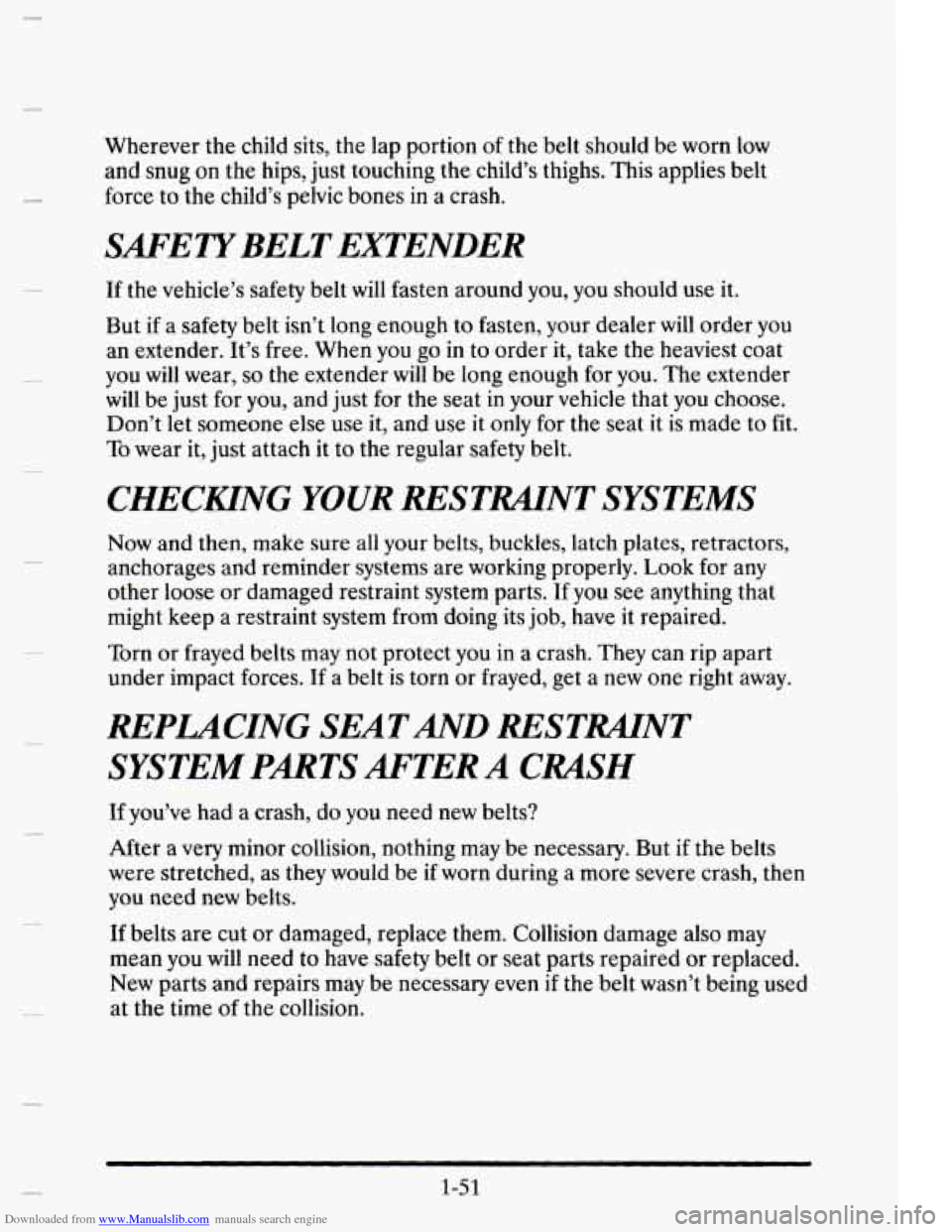
Downloaded from www.Manualslib.com manuals search engine I
Wherever the child sits, the lap portion of the belt should be worn low
and snug on the hips, just touching the child’s thighs. This applies belt
force to the child’s pelvic bones in a crash.
SAFEWBELT EXTENDER
If the vehicle’s safety belt will fasten around you, you should use it.
But if a safety belt isn’t long enough to fasten, your dealer will order you
an extender. It’s free. When you go in
to order it, take the heaviest coat
you will wear, so the extender will be long enough for you. The extender
will be just
for you, and just for the seat in your vehicle that you choose.
Don’t let someone else use it, and use it only for the seat it is made to fit.
To wear it, just attach it to the regular safety belt.
CHECKING YOUR RESTMNT SYSTEMS
Now and then, make sure all your belts, buckles, latch plates, retractors,
anchorages and reminder systems are working properly.
Look for any
other loose or damaged restraint system parts. If you see anything that
might keep a restraint system from doing its job, have it repaired.
Torn or frayed belts may not protect you in a crash.
They can rip apart
under impact forces. If a belt is torn
or frayed, get a new one right away.
REPLACING SEATAND RESTWNT
SYSTEM PARTS AFTER A CRASH
If you’ve had a crash, do you need new belts?
After a very minor collision, nothing may be necessary. But
if the belts
were stretched, as they would be if worn during a more severe crash, then
you need new belts.
If belts are cut or damaged, replace them. Collision damage also may
mean you will need to have safety belt
or seat parts repaired or replaced.
New parts and repairs may be necessary even
if the belt wasn’t being used
at the time
of the collision.
1-51
Trending: battery location, seat adjustment, maintenance schedule, display, service indicator, change key battery, air suspension
